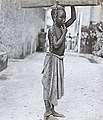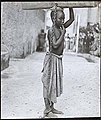Fasciculus:Slavezanzibar2.JPG

Mensura huius perspectionis: 400 × 600 elementa imaginalia. Aliae mensurae: 160 × 240 elementa imaginalia | 320 × 480 elementa imaginalia | 683 × 1 024 elementa imaginalia.
Sua resolutio (683 × 1 024 elementa imaginalia, magnitudo fasciculi: 68 chiliocteti, typus MIME: image/jpeg)
Historia fasciculi
Presso die vel tempore fasciculum videbis, sicut tunc temporis apparuit.
| Dies/Tempus | Minutio | Dimensiones | Usor | Sententia | |
|---|---|---|---|---|---|
| recentissima | 03:35, 19 Februarii 2014 |  | 683 × 1 024 (68 chiliocteti) | Jbarta | higher resolution |
| 20:21, 21 Septembris 2011 |  | 242 × 283 (27 chiliocteti) | Cropbot | upload cropped version, operated by User:Finavon. Summary: border cropped | |
| 08:44, 21 Aprilis 2009 |  | 250 × 296 (18 chiliocteti) | File Upload Bot (Magnus Manske) | {{BotMoveToCommons|en.wikipedia|year={{subst:CURRENTYEAR}}|month={{subst:CURRENTMONTHNAME}}|day={{subst:CURRENTDAY}}}} {{Information |Description={{en|Photograph of a slave boy in Zanzibar. Taken c.1890. Unknown photographer. National Maritime Museum, Lo |
Nexus ad fasciculum
Ad hunc fasciculum nectit:
Usus fasciculi per inceptus Vicimediorum
Quae incepta Vici fasciculo utuntur:
- Usus in ar.wikipedia.org
- Usus in bcl.wikipedia.org
- Usus in bo.wikipedia.org
- Usus in ca.wikipedia.org
- Usus in cs.wikipedia.org
- Usus in en.wikipedia.org
- Usus in en.wikiquote.org
- Usus in en.wikiversity.org
- Usus in eo.wikipedia.org
- Usus in es.wikipedia.org
- Usus in eu.wikipedia.org
- Usus in fi.wikipedia.org
- Usus in fo.wikipedia.org
- Usus in fr.wikipedia.org
- Usus in gl.wikipedia.org
- Usus in he.wikipedia.org
- Usus in hr.wikipedia.org
- Usus in ht.wikipedia.org
- Usus in hy.wikiquote.org
- Usus in id.wikipedia.org
- Usus in ig.wikiquote.org
- Usus in it.wikipedia.org
- Usus in jam.wikipedia.org
- Usus in ja.wikipedia.org
- Usus in lt.wikipedia.org
- Usus in mk.wikipedia.org
- Usus in mt.wikipedia.org
- Usus in nn.wikipedia.org
- Usus in no.wikipedia.org
View more global usage of this file.
